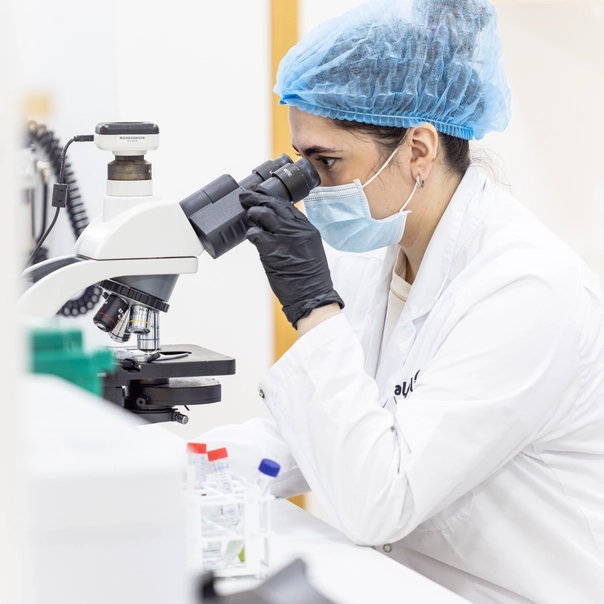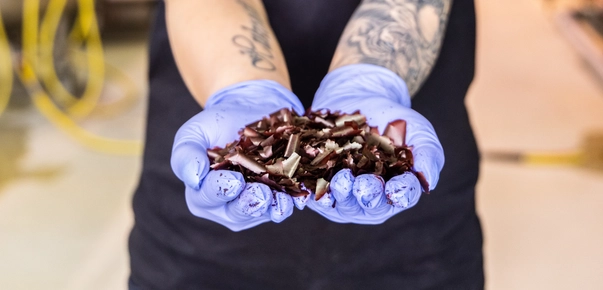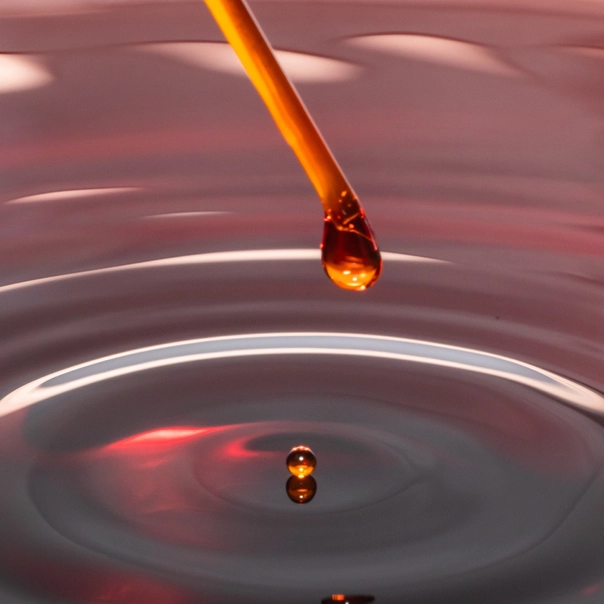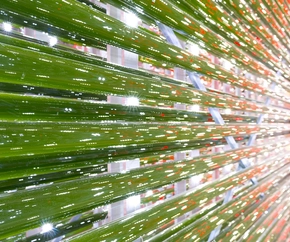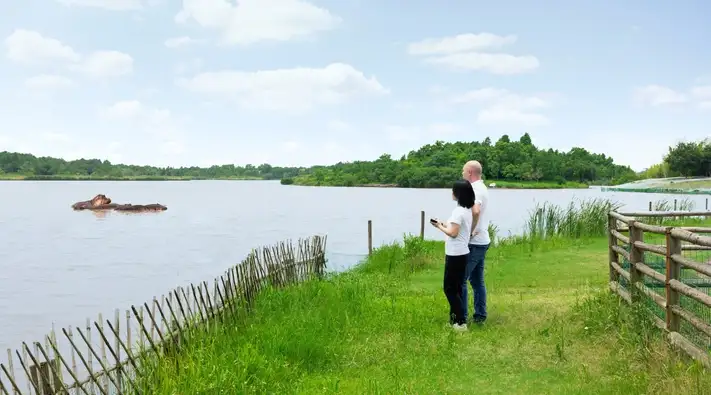
Superfood from the tube aquarium
With sustainable farming and the avoidance of animal products becoming important aspects of personal well-being, there is a rising interest in vitamin-rich, ecologically friendly superfoods like microalgae. Cultivated in glass tubes made of specialty glass, experts believe this single-celled organism could be the future of human health.
To increase health and well-being, people rely on microalgae as food supplement.
- There is a rising interest in vitamin-rich, ecologically friendly superfoods like microalgae.
- Icelandic algae producer Algalif cultivates the miroalgae Haematococcus pluvialis and extracts the natural antioxidant astaxanthin from it.
- It uses tubes made of special glass from SCHOTT for the cultivation process.
Stacked floor to ceiling as far as the eye can see, long glass tubes snake in serpentines. Illuminated by countless LED lights, the tubes are bristling with bright green turmoil, like water about to reach the boiling point. Yet despite the fact that trillions of living organisms are reproducing incessantly in the six-meter-high photobioreactor, the atmosphere itself is quiet and peaceful. If you weren‘t brought in through a perfectly normal production building first, you could mistake this place for some kind of Martian biotech laboratory. But you’re not in the future, nor are you in space. You’re at the microalgae farm of Icelandic producer Algalif.
"You have to see this place with your own eyes, the atmosphere is almost surreal and really just hard to describe," says Tryggvi Stefánsson, Chief Operating Officer (COO) of Algalif. For ten years, the manufacturer has been cultivating the microalgae Haematococcus pluvialis in Reykjanesbær – a small Icelandic town on the southwestern tip of the volcanic island. After cultivating the algae in glass tubes provided by SCHOTT, Algalif extracts the natural antioxidant astaxanthin from it, which the company then sells to the dietary supplement industry, among others.
All algae, or what?
Everyone has encountered them at some point. Whether it tickled your feet while swimming in a lake, was wrapped around the maki roll at your favorite Japanese restaurant, or was the primary ingredient in that revitalizing green face mask you put on after a long day – algae is already a major part of our day-to-day lives.
But as the different examples show, not all algae are the same. The simplest distinction is by size: macroalgae are visible to the naked eye and can grow from a few millimeters to 60-meters in length. One form of macroalgae that many are familiar with is the aforementioned algae used by sushi restaurants, called nori algae.
Microalgae, on the other hand, are individually visible only under a microscope, and most are single-celled organisms. These are the algae that have long been used in cosmetic products. Spirulina and chlorella are representatives in the microalgae camp that humans now know and use as food supplements.
Like land plants, algae perform photosynthesis and are thus essential for the earth's climate as oxygen suppliers and CO2 binders. However, algae grow at a rapid rate in either salt or fresh water, and do not require scarce resources such as arable land or irrigation. For instance, one hectare of cultivated land yields one ton of rapeseed biomass per year, while one hectare of algae cultivation yields 20 tons. Because of this clear advantage over land plants, research is underway to determine whether the aquatic plants can slow climate change through targeted use.
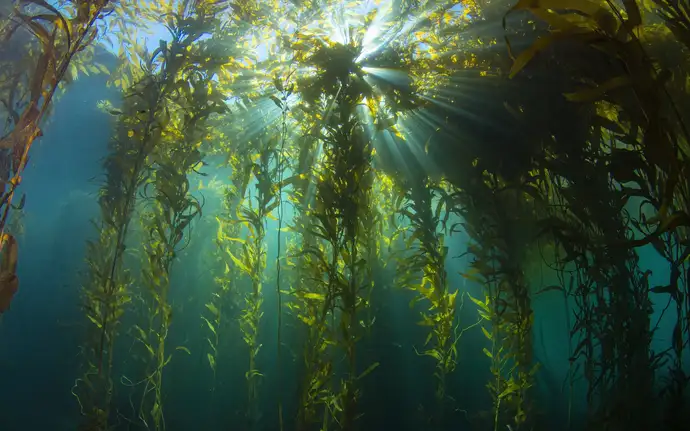
Today, health means well-being
Whether from the sea or a cultivation facility in Iceland, microalgae are considered a superfood, and have thus entered the spotlight as a topic in the health industry. In today's carefree society, there is room for reflection, self-optimization, and the pursuit of happiness and health. Being healthy is no longer just about having an intact body, it’s about uniting one’s physical and mental health for overall, holistic well-being.
Of course, there are various strategies for achieving this. Some are dictated by fashion and the media: Mindfulness, detoxing, work-life balance, self-care, and mental health are just a few buzzwords that make up part of today's holistic understanding of health. While some pursue a sense of well-being through socializing, sports, or meditation, almost everyone believes healthy and responsible nutrition is the foundation of a healthy lifestyle – be it vegan, sustainable, regional, seasonal, or organic. The more criteria an individual meets, the greater their sense of well-being, because they are taking part in something much bigger than themselves.
To that end, nutritional supplements, or “superfoods,” are increasingly being considered a necessary and important addition to a healthy diet. Though it’s a term that gets thrown around loosely, superfood is meant to specify certain foods with inherently valuable and highly concentrated ingredients that are particularly beneficial to human health. To date, many contenders have reached the zenith of superfood popularity, only to be criticized for detrimental pitfalls. For example, nutrient-rich avocados are plagued by unsustainably long transport routes, smoothies contain loads of hidden sugar, chia seeds are prohibitively expensive, and goji berries are often contaminated by polluted soil.
An exciting newcomer to the field, microalgae have the potential to become the superfood of all superfoods.
True all-rounder
Approximately 70% of the Earth’s atmospheric oxygen comes from algae, underscoring their critical role in sustaining our planet. Aside from this significant contribution, experts believe there is untapped potential yet to be found in the organisms, which is why they are the focus of extensive research.
- Embracing Algae Propulsion: With the rising demand for alternative energy sources, the potential of microalgae as a viable biofuel is gaining traction. Initial tests indicate that microalgae can function as a sustainable biofuel alternative and could therefore replace fossil fuels on a larger scale. Not only do they provide energy, but they also don't compete for use with foods such as canola or corn.
-
Built from Algae: An architectural technologist from Denmark is developing seaweed panels that serve as eco-friendly home insulation. Meanwhile, the "Algentechnikum" at the Technical University of Munich is conducting research into a carbon neutral alternative to carbon derived from microalgae. Traditionally, such fibers are obtained from crude oil or natural gas.
- Meat from Microalgae: An Israeli startup is developing a red microalgae from the species Porphyridium for plant-based burgers and steaks. The formulation mimics the red juices of animal meat – for plant-based meat alternatives without the need for artificial colors.
- Evening Dress Made of Algae: A Berlin startup is working with an Israeli algae farmer to revolutionize the textile industry by developing fabrics and dyes from algae. The advantages: no plastic fibers, less water-intensive cotton cultivation, and no chemicals on the skin.
- Microalgae as Medicine: Though it’s been established for roughly 25 years, the algae industry is relatively new to the pharmaceutical world. Nevertheless, its exponential market growth – reaching around 15-20% – is starting to turn heads. Experts from the Icelandic producer Algalif firmly believe the pharmaceutical industry will harness the potential of algae-based products within the next few years – the biggest remaining hurdle being regulatory approval.
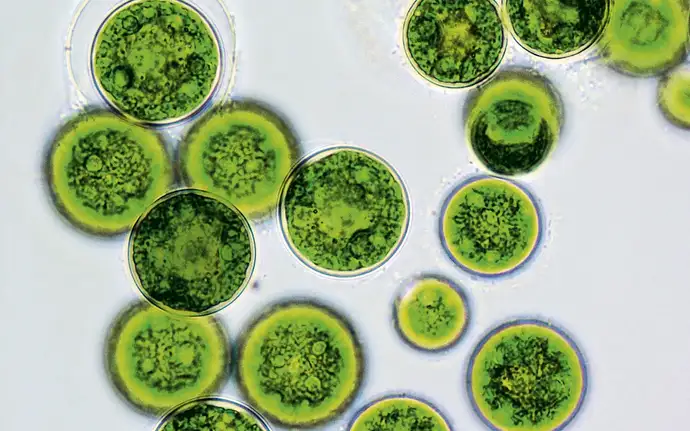
With stress to the anti-stress agent
Back in Iceland, within the freshwater-filled photobioreactor, a transformative process unfolds. COO Tryggvi oversees the growth of trillions of tiny, single-celled algae colleagues alongside his dedicated team of around 50 multicellular employees. As the algae reach their desired growth, the tranquil chaos within the tubes comes to an abrupt end.
"The Green Phase is over, giving way to the next step in production: the Brown Phase, wherein the algae are deprived of nutrients," explains biologist Julia Gamaniek. In this and the following Red Phase, the small organisms are subjected to deliberate stress. "This is how we get them to produce astaxanthin," Julia continues.
The lush green that once emanated from the glass tubes turns a deep, brownish red. And with that, it’s time to harvest. The astaxanthin is extracted from the biomass into a lipid rich fraction called oleoresin. Despite the taxing production journey, oleoresin serves as an anti-stress agent for humans, effectively combating oxidative stress and restoring metabolic balance.
"According to studies, astaxanthin is good for brain, eye, cardiovascular and skin health,” says Algalif's marketing manager Svavar Halldorsson, who’s gotten used to routinely listing astaxanthin’s many benefits. “It helps with healthy aging and muscle recovery,” he continues, adding that he has noticed that his own skin is able to withstand the sun significantly longer since he began taking astaxanthin daily three years ago. What’s more, Halldorsson says his doctor has noticed a significant improvement in his overall physical health. “Personally, I think anyone who takes it daily should get a discount with their health insurance," he says, laughing.
In the case of astaxanthin, he pragmatically counters the argument that substances important for the body can also be absorbed through normal nutrition, thus eliminating the need for dietary supplements: "For the recommended daily dose of eight milligrams, you would have to eat four large salmon. I love fish, but that would be too much of a good thing."
World market leader from the far north
Founded in 2012, Algalif is one of the world's largest producers of natural astaxanthin – the substance that gives salmon and flamingos their pink color. The company currently plans to expand the production area from 5,500 to 12,500 square meters in 2024. The length of the photobioreactor's glass tubes will grow from 180 to 600 kilometers, with an amount of water of about one million liters. The yield of pure astaxanthin is expected to more than triple to 5,000 kilograms per year, a threefold increase from the start of 2023.
Learn more
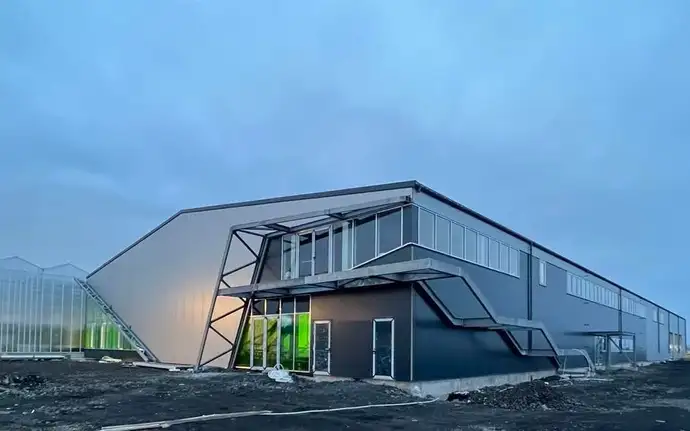
Natural system in tubing
Before it can be processed or consumed, the algae must of course be cultivated, which can be done through a number of different approaches: Close to nature in open basins exposed to sunlight, or in closed systems, such as the photobioreactors in Iceland, which resemble giant test tubes but have nothing in common with laboratory cultivation.
Ultimately, Tryggvi says: "Our glass tubes contain only the purest Icelandic freshwater and our Haematococcus pluvialis." The reactors can be plastic or glass, and the algae's photosynthesis can be induced by sunlight or even artificial light. Algalif opted for the LED variant and glass tubes from SCHOTT.
"For our needs, this is the perfect combination," says Tryggvi. "We can expose the single-celled organisms to exactly the right amount of light needed to produce astaxanthin."
Plus, there is another key advantage to the closed system: "Even though we have some of the cleanest air in the world here in Iceland, the algae in the tubes are completely protected from outside influences,” his colleague Julia explains. “Even the exhaust fumes from a nearby road could otherwise be absorbed."
Ultimately, he says, glass has the clear advantage over plastic in that there is no interaction with the contents, it is more durable, and it can be cleaned easily. After the Red Phase and harvesting, the cycle in the Icelandic biotech spaceship starts all over again: water, a starter culture of algae, and finally, the glass serpentines, glowing green and brimming with life.




